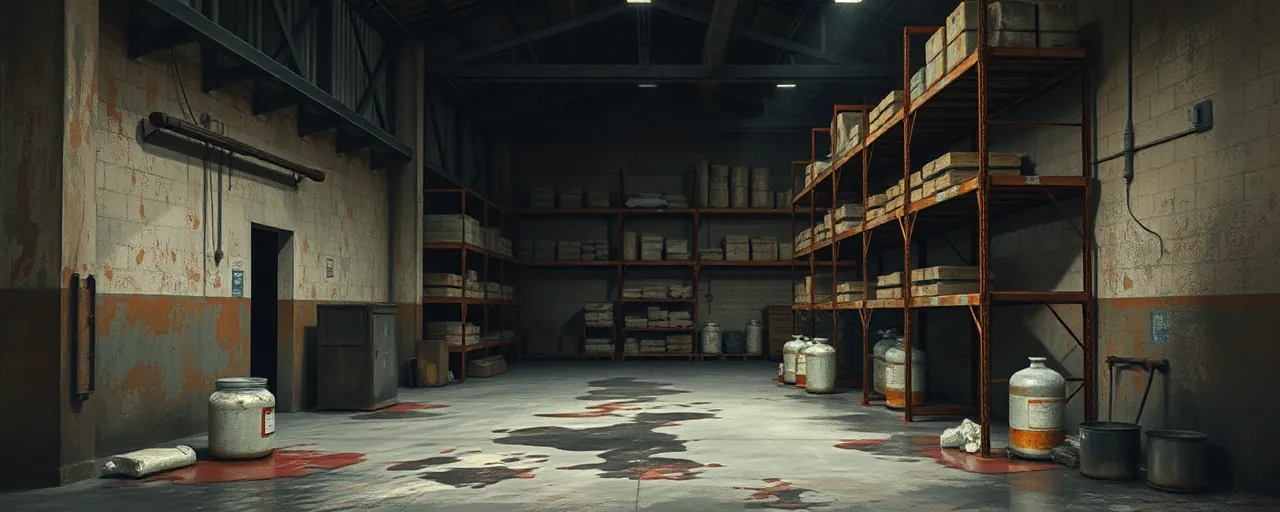A Blaze Ignites Scrutiny
A fire ripped through a Bio-Lab Inc. warehouse in Conyers, Georgia, last month, sending plumes of smoke into the sky and forcing nearby residents to evacuate. The U.S. Department of Labor’s investigation pinned the blaze on improperly stored hazardous chemicals, a misstep that could have been avoided with better oversight. Now, the Occupational Safety and Health Administration (OSHA) has slapped the company with over $61,000 in penalties, citing multiple safety violations. For workers and residents alike, the incident is a stark reminder of what’s at stake when safety takes a backseat.
The episode has thrust workplace safety into the spotlight, raising questions about how companies handle dangerous materials and whether regulators are doing enough to keep them in check. Bio-Lab, a chemical manufacturer, has 15 days to respond—pay the fines, negotiate with OSHA, or fight the findings. Beyond the headlines, though, lies a bigger story about the real-world toll of such incidents and the push-pull between enforcement and prevention that shapes safety rules nationwide.
Unpacking the Violations
OSHA’s probe found four serious violations at Bio-Lab, each tied to a substantial risk of harm, alongside two lesser infractions. The details paint a troubling picture: chemicals stored haphazardly, inviting disaster. Fines for serious violations can hit $16,550 per incident this year, a 2.6% bump from 2024, aimed at nudging companies to prioritize safety. For Bio-Lab, the $61,473 tab reflects a mix of penalties, though it’s a fraction of the $165,514 maximum for willful breaches. The company’s next move will signal whether it sees this as a wake-up call or a cost of doing business.
Experts point out that fines alone don’t tell the full story. Data from recent years shows enforcement has tightened, with OSHA stepping up audits and pushing for compliance. Yet, the Bio-Lab fire joins a string of chemical warehouse incidents—over 270 were reported in 2023—suggesting gaps persist. Advocates for stricter rules argue that penalties deter negligence, while business owners often counter that the costs outweigh the benefits of upgrades like better ventilation or fire-resistant storage. Both sides agree on one thing: when chemicals ignite, the fallout hits workers and communities hardest.
The Human Cost of Hazardous Exposure
Fires like the one at Bio-Lab aren’t just property losses; they’re health hazards. Hazardous chemicals, when mishandled, can sear lungs, scar skin, or trigger long-term illnesses like cancer. Studies tie prolonged exposure—say, above 10 parts per million—to a spike in respiratory woes. Workers in chemical-heavy industries face the brunt, but a toxic plume doesn’t stop at the factory gate. In Conyers, evacuations underscored how quickly risks spill over, leaving families scrambling for safety.
Prevention isn’t a mystery. Safety gear helps, but it’s not enough in high-risk zones. Job rotation, time limits, and beefed-up ventilation cut exposure, while real-time monitoring can catch leaks before they spiral. Historically, regulators have leaned on standards like OSHA’s Hazard Communication rules to enforce training and labeling. Still, new chemicals hit the market yearly, and keeping up is a slog. For workers, the stakes are personal—every shortcut on storage or training is a gamble with their health.
Prevention vs. Punishment
Stopping fires before they start takes more than fines. Warehouses packed with flammable goods need sprinklers, fireproof walls, and oxygen-slashing systems that choke flames before they catch. The Bio-Lab incident echoes past disasters where human error—like sloppy storage or skipped inspections—lit the fuse. Training programs can curb those mistakes, but they’re only as good as their follow-through. OSHA offers free consultations to help companies spot risks, a lifeline for smaller outfits juggling tight budgets.
The flip side? Compliance isn’t cheap. Upgrading a facility with advanced detection or storage cabinets can run into the millions, a tough sell when profits are lean. Supporters of tougher enforcement say the math checks out—penalties and lawsuits often dwarf prevention costs. Others, including some industry voices, argue that regulators overreach, piling on rules that stifle growth. Caught in the middle are workers and neighbors, who don’t get a vote when companies weigh safety against the bottom line.
Where the Rules Stand
OSHA’s playbook for chemical storage is clear: segregate reactive stuff, lock it in approved cabinets, and keep Safety Data Sheets handy. Big hauls of flammable liquids demand vented rooms. These rules, honed over decades, draw from hard lessons—think back to the 1774 Fire Prevention Act, which tackled warehouse risks with escape routes. Today’s tech, like spill-proof cabinets, builds on that legacy. Enforcement has teeth too; fail to fix a violation, and daily fines stack up fast.
Bio-Lab’s case tests that system. If the company contests the findings, it’ll face the Occupational Safety and Health Review Commission, an independent body that settles disputes. Win or lose, the outcome will ripple—either reinforcing OSHA’s clout or exposing cracks in its reach. For now, the agency’s ramped-up audits signal a harder line, but keeping pace with sprawling chemical inventories is a grind. The goal? Fewer fires, fewer sick workers, fewer nights like Conyers.
Looking Ahead
The Bio-Lab fire isn’t an outlier; it’s a warning. Chemical warehouses dot the U.S., each a potential flashpoint if safety slips. OSHA’s penalties and resources aim to nudge companies toward vigilance, but the balance between cost and caution remains shaky. Workers, meanwhile, clock in hoping the rules hold—a trust that’s been dented but not broken. For Conyers, recovery means rebuilding more than a warehouse; it’s about restoring faith in the safeguards meant to protect them.
What’s next hinges on action. Companies can lean on OSHA’s free tools to spot hazards, or they can roll the dice and hope luck holds. History shows that cutting corners ends badly—fines pile up, health bills soar, and communities pay the price. The Bio-Lab saga leaves a lingering question: will this spark lasting change, or just fade into the smoke of the last disaster?
